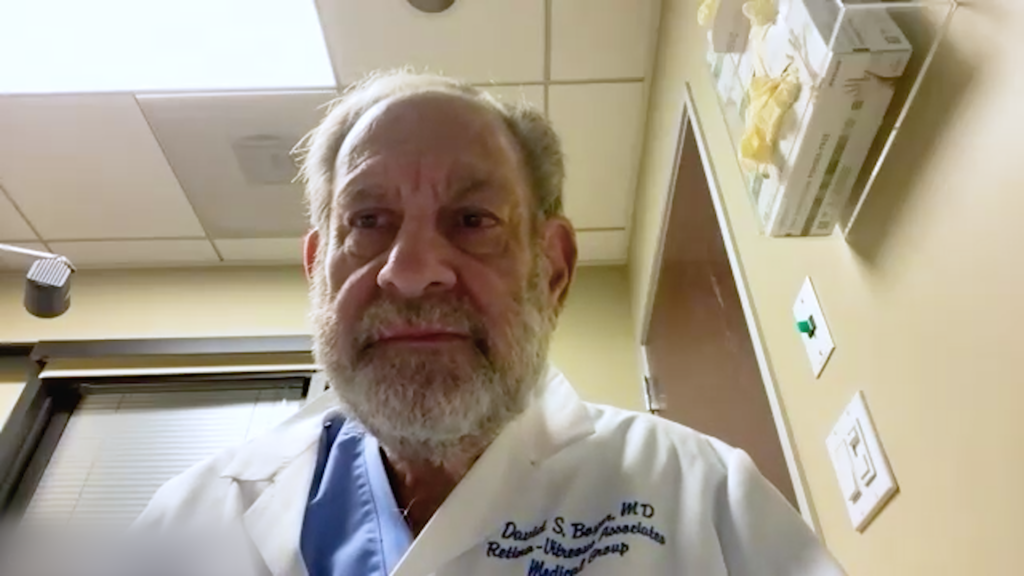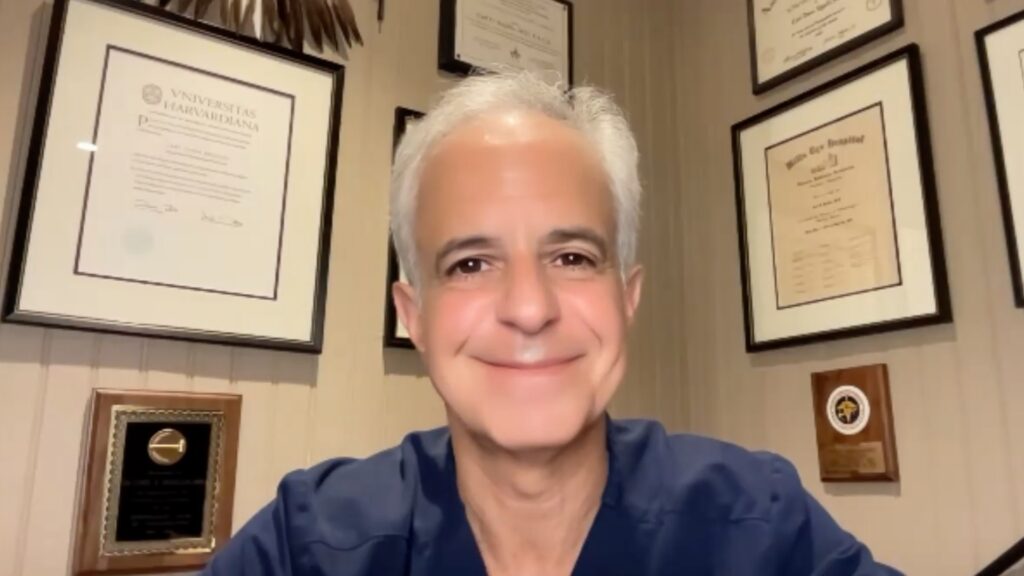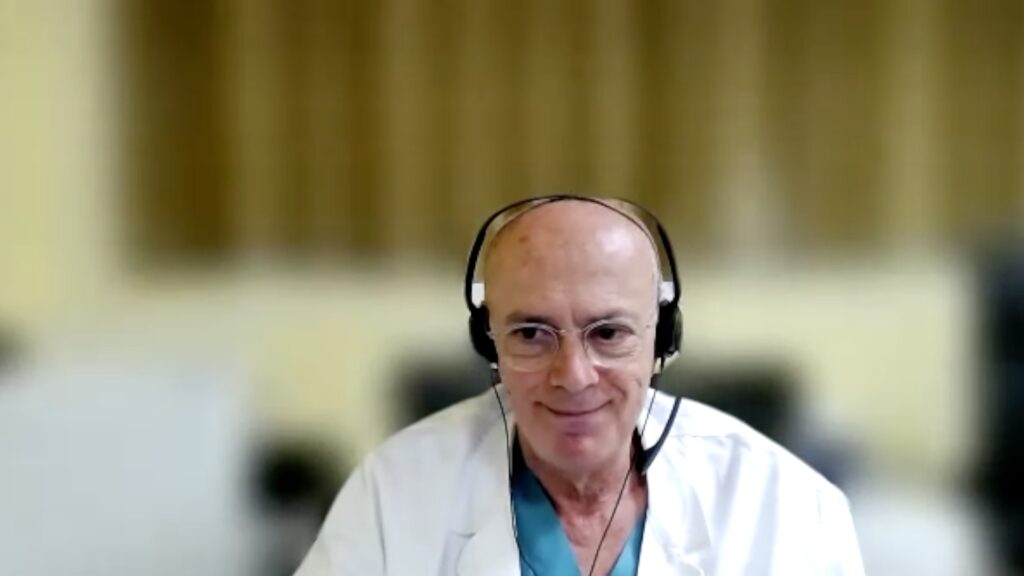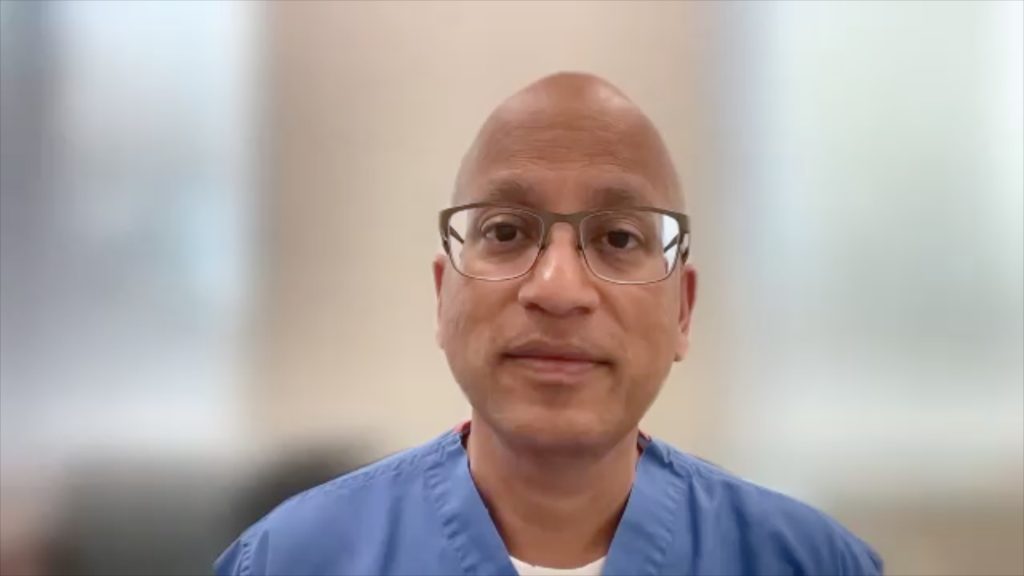Age-related macular degeneration (AMD) is a leading cause of blindness and its prevalence increases with age.1 There are two forms of AMD: dry (nonexudative) and wet (exudative). Dry AMD is the more common, accounting for around 90% of all cases, with 10% of the dry forms progressing to wet AMD.2 Despite considerable advances in the treatment of wet AMD, most notably anti–vascular endothelial growth factor (VEGF) treatment, there are no effective strategies for treating dry AMD. This is due to the fact that the disease process is complex, and involves a variety of cellular pathways.3
Cells of the human retinal pigment epithelium (RPE), which is situated between the choroid and the neural retina cells, are known to have several functions essential for the maintenance of photoreceptor cells. During aging, the RPE undergoes changes that lead to the accumulation of a yellow substance called drusen, which is one of the earliest manifestations of AMD.4 Further dysfunction and loss of RPE cells leads to degeneration of photoreceptors in eyes with dry AMD. In advanced disease, this evolves into geographic atrophy (GA), also known as atrophic AMD or advanced dry AMD.5
Increased understanding of the role of the RPE in AMD has led to the hypothesis that regenerating the impaired retina by delivering RPE cells to the subretinal space will end disease progression and allow damaged or dormant light-sensitive cells to return to function. 6 Successful RPE transplantation in animal models of AMD was first described in 1988. 6 Since then, however, this approach has been fraught with challenges, including limited cell survival following implantation and the formation of abnormal cell architectures in vivo.7 The last few years have seen the emergence of a number of RPE cell–based treatments that represent promising new treatment strategies for patients with dry AMD.
At Retina 2019, which was held on January 19–25, 2019, in Waikoloa, Hawaii, Allen Ho, MD, of Wills Eye in Philadelphia, discussed new RPE-based treatments for atrophic AMD.8 One treatment, OpRegen® (BioTime Inc., Alameda, CA, US) consists of RPE cells that are derived from human embryonic stem cells (hESC) and administered as a cell suspension in ophthalmic Balanced Salt Solution Plus (BSS Plus®; Alcon, Fort Worth, TX, US) by subretinal injection. 9 A phase I/IIa, dose-escalation clinical trial (NCT02286089) is evaluating the safety and tolerability of OpRegen transplantation in 24 patients with atrophic AMD. Interim data were presented at the 2018 Association for Research in Vision and Ophthalmology (ARVO) meeting, which was held from April 29 to May 3, 2018, in Honolulu, Hawaii. Among nine patients treated at the time of reporting, no treatment-related serious adverse events have been reported. The injection sites have shown rapid healing, and visual acuity has remained stable at follow-up of up to 24 months. Investigators have also observed a reduction of drusen, which has remained stable for two years in some subjects. New or worsening epiretinal membrane, a condition where a very thin layer of scar tissue forms on the surface of the retina, was observed in seven of the nine patients, but this did not require surgical removal.10
Another treatment, MA09-hRPE (Astellas Pharma, Tokyo, Japan), which also involves the subretinal injection of hESC-derived RPE cells (hESC-RPE), has been investigated in a phase I/II clinical study (NCT01344993) in patients with atrophic AMD, with encouraging initial results. After transplantation, 72% of patients had increased subretinal pigment at the atrophic area border, and at one year, visual function was improved in nine eyes and stable in seven. Optical coherence tomography (OCT) showed reconstitution or thickening of the RPE layer in some subjects. No adverse events relating to the transplantation were reported.11
A different approach currently under investigation requires the use of a patch comprising a fully differentiated hESC-RPE monolayer on a coated, synthetic basement membrane. A composite implant, termed the California Project to Cure Blindness-Retinal Pigment Epithelium 1 (CPCB-RPE1, Regenerative Patch Technologies, CA, US), consists of a polarized monolayer of hESC-RPE on an ultrathin, synthetic parylene substrate designed to mimic Bruch’s membrane, which degenerates during AMD. A phase I/II study (NCT02590692) is underway and preliminary findings are highly promising. Using OCT, consistent changes were seen with hESC-RPE and host photoreceptor integration. A single patient had improvement in visual acuity by 17 letters, and two patients had gains in visual function in fixation.12
Replacement of RPE cells has become an exciting area of clinical research. A number of clinical and preclinical studies of various transplantation techniques are ongoing,13 as well as new methods of manufacturing clinical-grade RPEs derived from induced pluripotent stem cells.14 However, we remain some way from using these treatments routinely in patients with advanced AMD. These new treatments also require new, purpose-designed microsurgical tools and strategies to place the treatments in the areas of GA without creating a hole in the retina. A hole in the retina may allow the cells to escape, meaning the dose becomes inconsistent and epiretinal membrane formation may occur.8 Other challenges include identifying the optimum cell sources and age of cells used for transplant and further refining the methods of cell delivery.6 Nevertheless, these early clinical trials represent an important step toward a therapy that could change the lives of millions worldwide.
Published:5 February 2019
References
- Colijn JM, Buitendijk GHS, Prokofyeva E, et al. Prevalence of age-related macular degeneration in Europe: The past and the future. Ophthalmology. 2017;124:1753–63.
- Gibbons A, Ali TK, Waren DP, et al. Causes and correction of dissatisfaction after implantation of presbyopia-correcting intraocular lenses. Clin Ophthalmol. 2016;10:1965–70.
- Ambati J, Atkinson JP, Gelfand BD. Immunology of age-related macular degeneration. Nat Rev Immunol. 2013;13:438–51.
- Khan KN, Mahroo OA, Khan RS, et al. Differentiating drusen: Drusen and drusen-like appearances associated with ageing, age-related macular degeneration, inherited eye disease and other pathological processes. Prog Retin Eye Res. 2016;53:70–106.
- Holz FG, Pauleikhoff D, Klein R, et al. Pathogenesis of lesions in late age-related macular disease. Am J Ophthalmol. 2004;137:504–10.
- Chichagova V, Hallam D, Collin J, et al. Cellular regeneration strategies for macular degeneration: Past, present and future. Eye (Lond). 2018;32:946–71.
- Kundu J, Michaelson A, Baranov P, et al. Approaches to cell delivery: Substrates and scaffolds for cell therapy. Dev Ophthalmol. 2014;53:143–54.
- Ho A. New RPE cell-based treatments in development for dry AMD. 2019. Available at: www.healio.com/ophthalmology/retina-vitreous/news/online/%7B5463591b-f689-4471-97cf-1a50f76d1d38%7D/video-new-rpe-cell-based-treatments-in-development-for-dry-amd(January 29, 2019).
- McGill TJ, Bohana-Kashtan O, Stoddard JW, et al. Long-term efficacy of GMP grade xeno-free hESC-derived RPE cells following transplantation. Transl Vis Sci Technol. 2017;6:17.
- Banin E, Hemo Y, Jaouni T, et al. Phase I/IIa clinical trial of human embryonic stem cell (hESC)-derived retinal pigment epithelium (RPE, OpRegen) transplantation in advanced dry form age-related macular degeneration (AMD): Interim results. Presented at: Association for Research in Vision and Ophthalmology (ARVO) Meeting, April 29 to May 3, 2018, Honolulu, Hawaii.
- Schwartz SD, Tan G, Hosseini H, et al. Subretinal transplantation of embryonic stem cell-derived retinal pigment epithelium for the treatment of macular degeneration: An assessment at 4 years. Invest Ophthalmol Vis Sci. 2016;57:ORSFc1-9.
- Kashani AH, Lebkowski JS, Rahhal FM, et al. A bioengineered retinal pigment epithelial monolayer for advanced, dry age-related macular degeneration. Sci Transl Med. 2018;10:eaao4097.
- Oswald J, Baranov P. Regenerative medicine in the retina: from stem cells to cell replacement therapy. Ther Adv Ophthalmol. 2018;10:2515841418774433.
- Sharma R, Khristov V, Rising A, et al. Clinical-grade stem cell-derived retinal pigment epithelium patch rescues retinal degeneration in rodents and pigs. Sci Transl Med. 2019;11: DOI: 10.1126/scitranslmed.aat5580.













